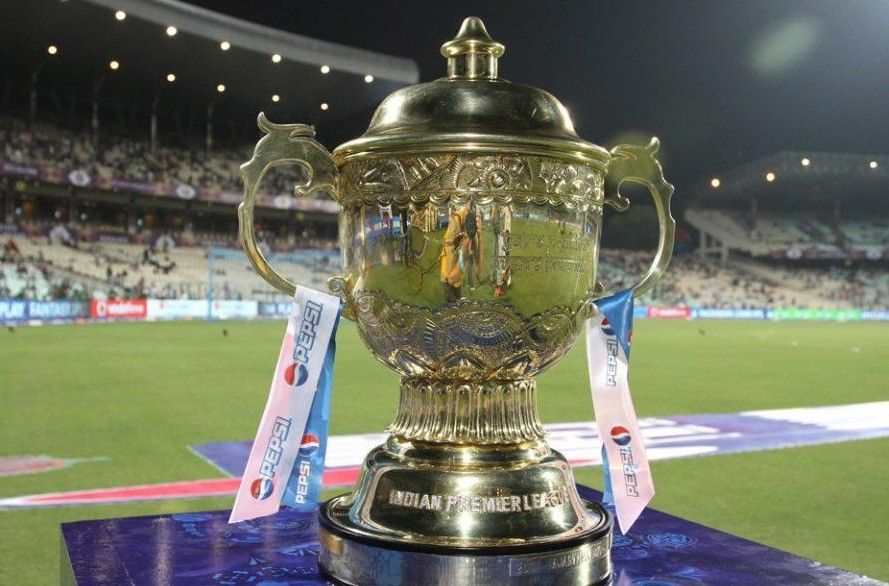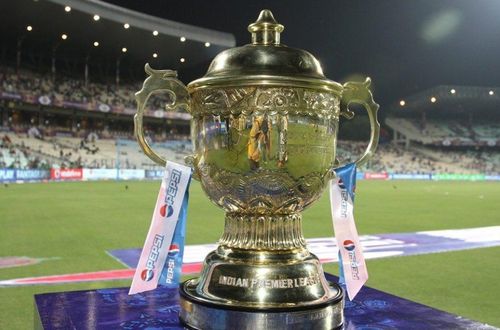
5 alterations that would make the IPL a better competition

The IPL trophy
The 6th edition of the Indian Premier League in 2013 had its fair share of spotlight thrown on it, but unfortunately, the spotlight was not always for the right reasons. First, the spot-fixing scandal and allegations made over a couple of team owners indulging in illegal betting seemed to threaten the very existence of the tournament. The administrators need to have a good hard look at things and ensure that IPL7 is run without the controversies that surrounded IPL6. The standard of cricket will always be there in a tournament like the IPL simply because of the quality of cricketers it attracts. That said, here, we take a look at a few tweaks to the system that will make it a better tournament for everyone involved.
1. Focus on the Cricket alone:
The administrators need to understand that the IPL is ultimately a sports event. If the cricket is of a high quality, the entertainment comes along with it. Surely, for a cricket fan, watching the likes of MS Dhoni, Virat Kohli, Chris Gayle and Dale Steyn in full flow would be as fulfilling, if not more, than watching a few scantily clad women move their bodies completely out-of-sync with the music being played. The ultimate on-field entertainment is the one that is provided by 22 competitors on the field of ply and not anyone beyond the boundaries.
2. Allow Player Retention:
Ultimately, what the supporters of a team identify the team by, is the players. If the IPL is to fulfil it’s creator’s ambition of matching the likes of the NBA and the English Premier League, large-scale movement of players between franchises won’t help. For example, a Ryan Giggs or a Jamie Carragher will always be associated with Man United and Liverpool respectively. Similarly, franchises need to carve out a niche for themselves, something only Chennai Super Kings and Mumbai Indians have managed to do so far. Even the players would have created a rapport with the people of that particular city, and too much movement of players will only be detrimental to the IPL.
In this regard, what the IPL has reportedly come up with, in terms of player retention is welcome news. With a maximum of 5 players reportedly being allowed to be retained by each franchise, and each franchise being able to buy back a further 3 players in the auction, by simply matching the highest bid, is great news.
3. Do away with the Strategic Timeout
The worst kept secret of the IPL is that there is as little strategy to do with a strategic timeout as there is rain in the Sahara Desert. “Strategic Timeout” is just a more polished term to use for “Extended Commercial Break”. According to investigators, the Strategic Timeout is when all hell breaks loose in the betting market and there have been a few games where games have turned miraculously from the timeout onwards.
Even purely from a cricketing point of view, the Strategic Timeout makes very little sense. T20 Cricket is supposed to be a fast format with thrills and spills galore. Having 2 breaks right in the middle of each innings is as big as antidote as there is. Also, cricket, T20 in particular, is a sport where momentum is crucial. All that these breaks do, is break the momentum of the side that has gained the upper hand. How often have we seen a match turn right on its head in the over immediately after the timeout?
4. Keep the number of teams at 8:
This is an important aspect of the IPL that is often overlooked. From a cricket point of view, the first 3 editions saw much more quality cricket than the last 3 editions. Also, the new franchises Kochi Tuskers and Pune Warriors struggled because the cream of the talent was already retained by the existing 8 franchises. Also, with the squad being 25-27 players each, 8 teams means a pool of around 200 players whereas 10 teams would mean a pool of 250-270 players where the quality of cricket on show is obviously diluted. With 8 teamn, the tournament was also much more competitive with the gap between the champions and the 8th placed team not being much in the first 3 editions of the IPL.
5. Reduce the Salary Cap
With the salary cap being as high as it was in 2011 ($10 million), the money power of the richer teams, like Mumbai Indians, was accentuated even further. A high salary cap forces teams that work on a much lower budget, like the Rajasthan Royals, to work incredibly hard to find talented local cricketers, who were unheard of previously. While Rajasthan were successful at it, managing to rope in the likes of Siddharth Trivedi, Sanju Samson and Pravin Tambe, it doesn’t always work out right for the team. A reduced salary cap would mean a more level playing field, which would only increase the competetiveness of the league. Also, a reduced salary cap would mean that fewer players will play with the pressure of a pricetag on them, which they would have to repay through performance.
While the IPL has been much loved by the public, it has had its fair share of hardships, and the BCCI would be hoping that 2014 would be the year where it can turn a new leaf, and make the IPL controversy-free, and let the cricket do all the talking.